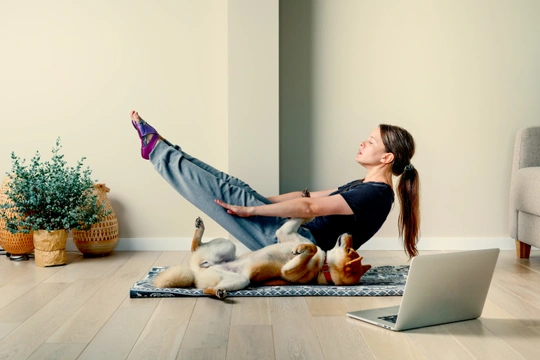
Winter is comming: tips on indoor activities for your dog
It’s not always possible to be outside as much as our dogs might like, and there may be whole days when you’re stuck indoors. A dog used to plenty of activity can be challenging if the weather’s too bad to venture out. Here are just a few ideas for indoor activities to keep your dog happy.
Not all dog toys are equal
These days, there is a fantastically wide range of dog toys to choose from. Selecting the right toy as an outlet for your dog’s natural behaviour or for training games is important. Let’s look at the main categories.
- Treat dispenser toys to help fight off boredom
- Interactive toys for games such as fetch and tug that you play together
- Plush toys for your dog to play with on their own, carry or just cuddle up to
Things you can do with the recycling
Of course, ‘toys’ don’t have to be bought from a shop. Your puppy or older dog can have a great time hunting for their food from home-made items. There will be plenty in your recycling – carboard boxes, toilet roll tubes, yoghurt pots, paper - that can be turned into great enrichment games. There are many ways to create games that encourage your dog to sniff, lick, chew, paw or roll an item around to get at the treats you’ve hidden for them.
It can be as simple a turning a cardboard box on its side, filling it with scrumpled up paper into which you’ve chucked some of their kibble or dry treats and letting your dog hunt for the food.
The inner tubes from toilet rolls or kitchen towels can be used for all sorts of games: set them up to use as very short ‘weave’ poles, use as targets for games of touch with a nose or paw, or use them to create treat dispensers.
Just keep an eye on your furry buddy to be sure your dog isn't eating the toy instead of the toy.
Things to help with training
Even though you’re indoors, you can still play some training games. The following will all help with building a really good recall – so important if you want to give your dog freedom when you do go out.
Hide and seek is great fun. To begin, when your dog isn’t watching you, hide behind some furniture or a door and call them. When they find you, reward with a treat and plenty of praise – make finding you exciting!
Teach your dog a nose touch. All your dog needs to do is touch their nose to the palm of your hand, yet it’s a great way to begin teaching many other tricks as well as giving them a focus for a recall. To start, present your open hand to your dog and wait from them to investigate with their nose (most will do so but if your dog doesn’t seem interested, you could rub your hand with a treat or something else they will want to sniff). As soon as they touch your hand with their nose, say ‘yes’ to mark the behaviour, and praise and reward them with a treat. In time you can introduce a cue such as ‘touch’.
Depending on the size of your dog, another simple training game is a leg weave. Great for fun and confidence building as well as keeping your dog’s interest in being close to you. Hold a treat between your middle finger and thumb. Point your first finger outwards – as you progress, this will become a hand signal. With one foot forward, slowly lure your dog with the treat near their nose so they start at your back foot and move through your legs to finish by your front foot. Mark with a ‘yes’ and reward. Now, slowly, move your back foot to the front and repeat in the opposite direction. As your dog gets better at this, you can stop using the treat as a lure and just rely on your pointing finger.
Games to play together
The games you play together will depend on the space you have and the size of your dog! Tug should be fine indoors, but you probably won’t want a large dog careering round your furniture to fetch a ball. Tug is a great game to occupy your dog as it provides an outlet for their natural desire to grab and pull. There are plenty of great tug toys around, or you could make your own. Just be sure it’s long enough for your dog to grab and tug easily without grabbing your hand at the same time.
To begin, wiggle or drag the tug invitingly around on the floor. Don’t push it at your dog – to be fun it needs to simulate prey that’s alive and trying to escape. To be safe, games of tug need some simple rules. If your dog grabs your hand or clothing rather than the toy, just stop the game for a short while. You don’t need to say anything, just walk away. Your dog will gradually make the connection. You can introduce a cue such as ‘tug’ or ‘get it’ when you want them to grab the tug toy. If they try to grab the tug before you’ve given the cue, wait until they’re calm and try again.
So, just because the weather’s foul and you’re stuck indoors, there’s still plenty you and your dog can do to keep each other entertained!
For more training advice, please visit our dog coach Vicky Carne's website.



